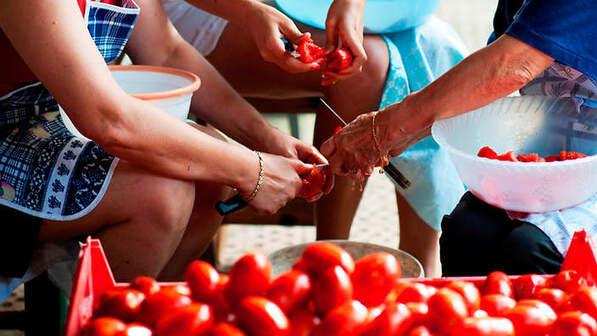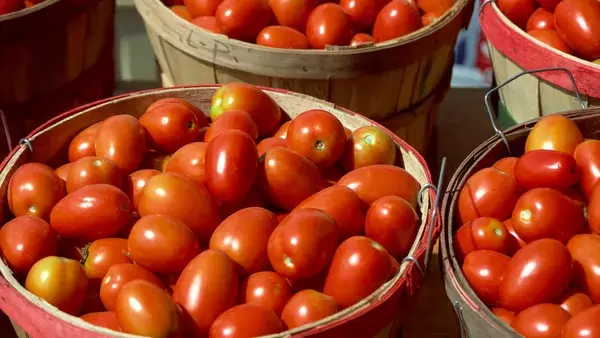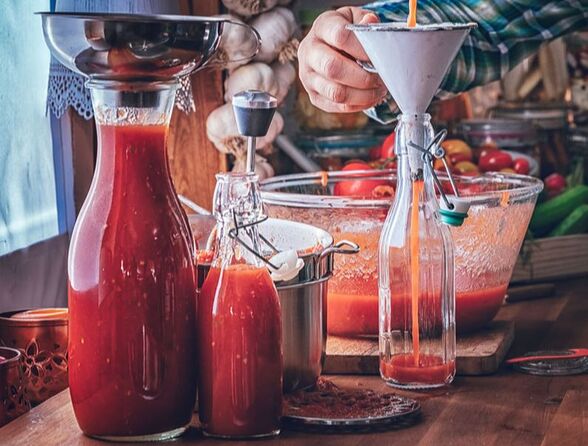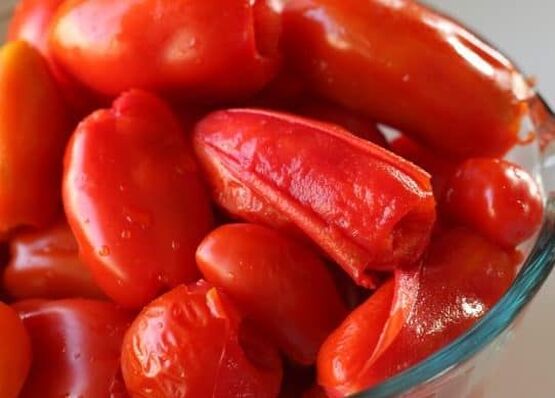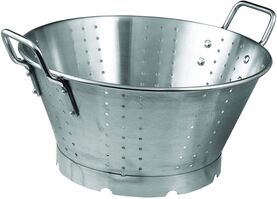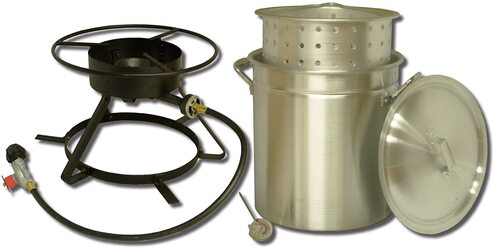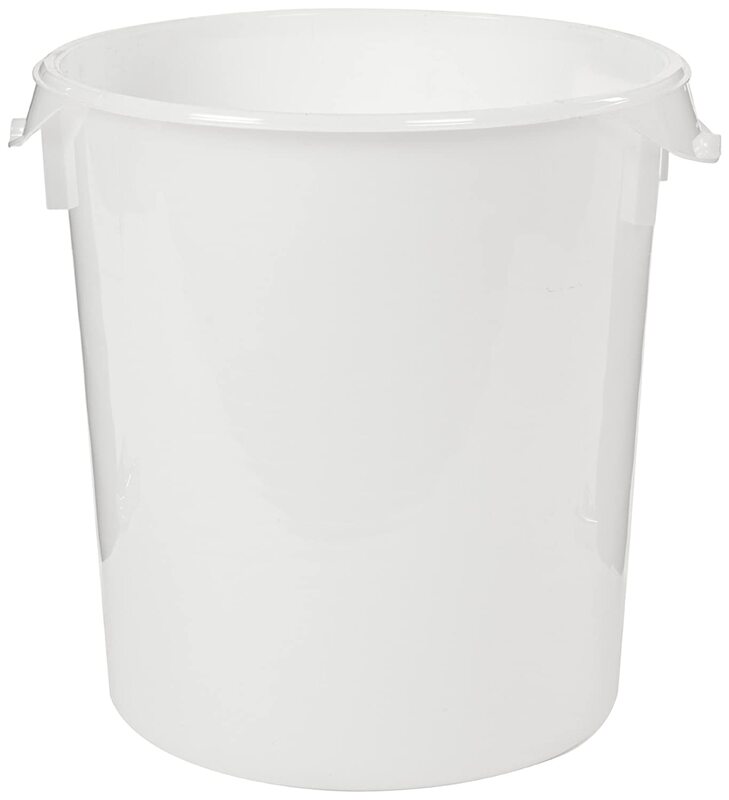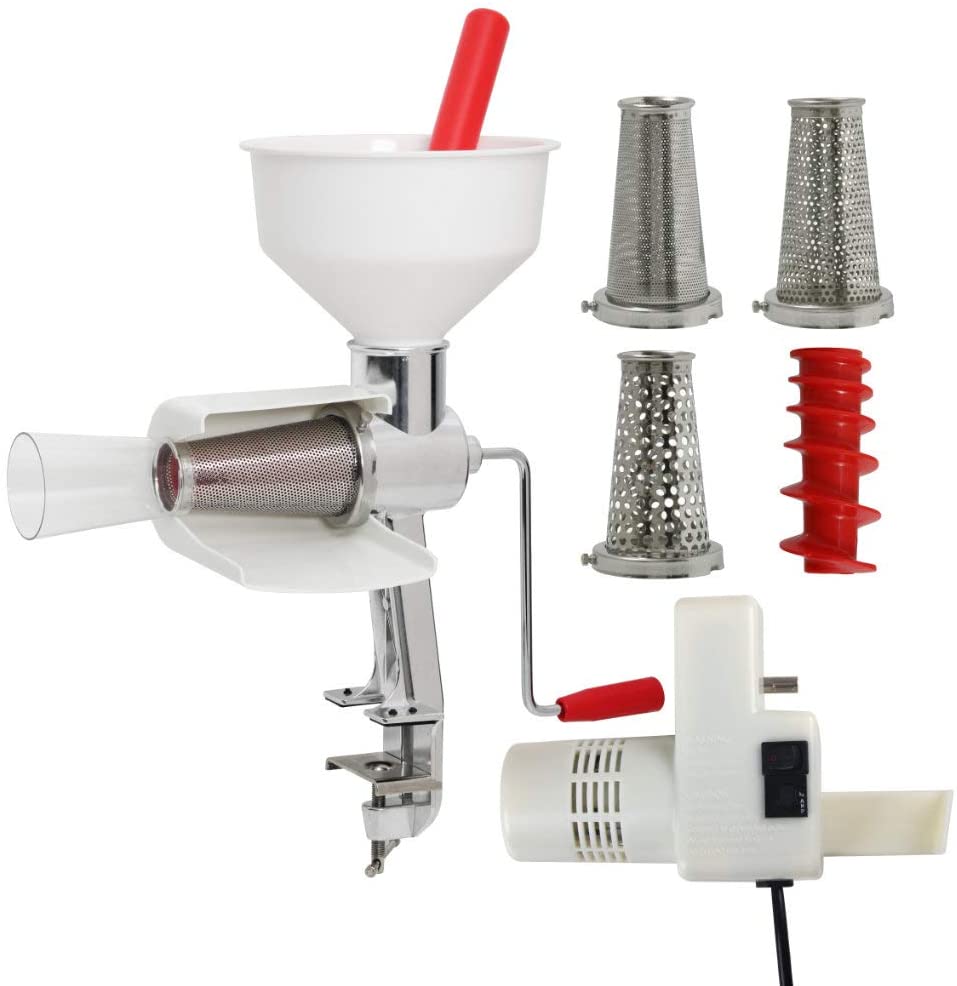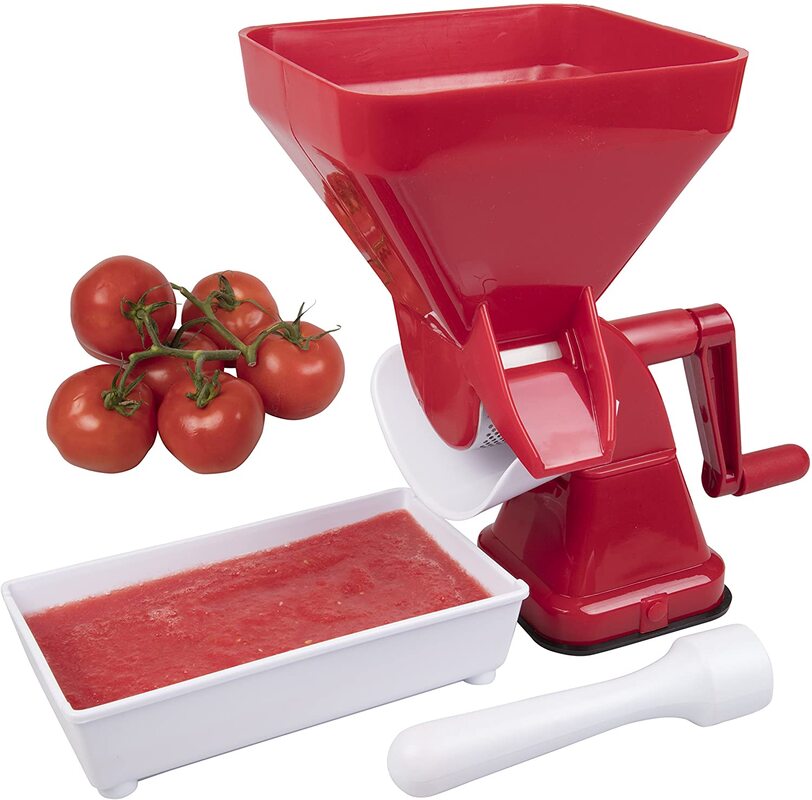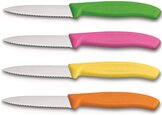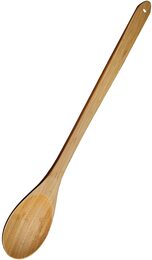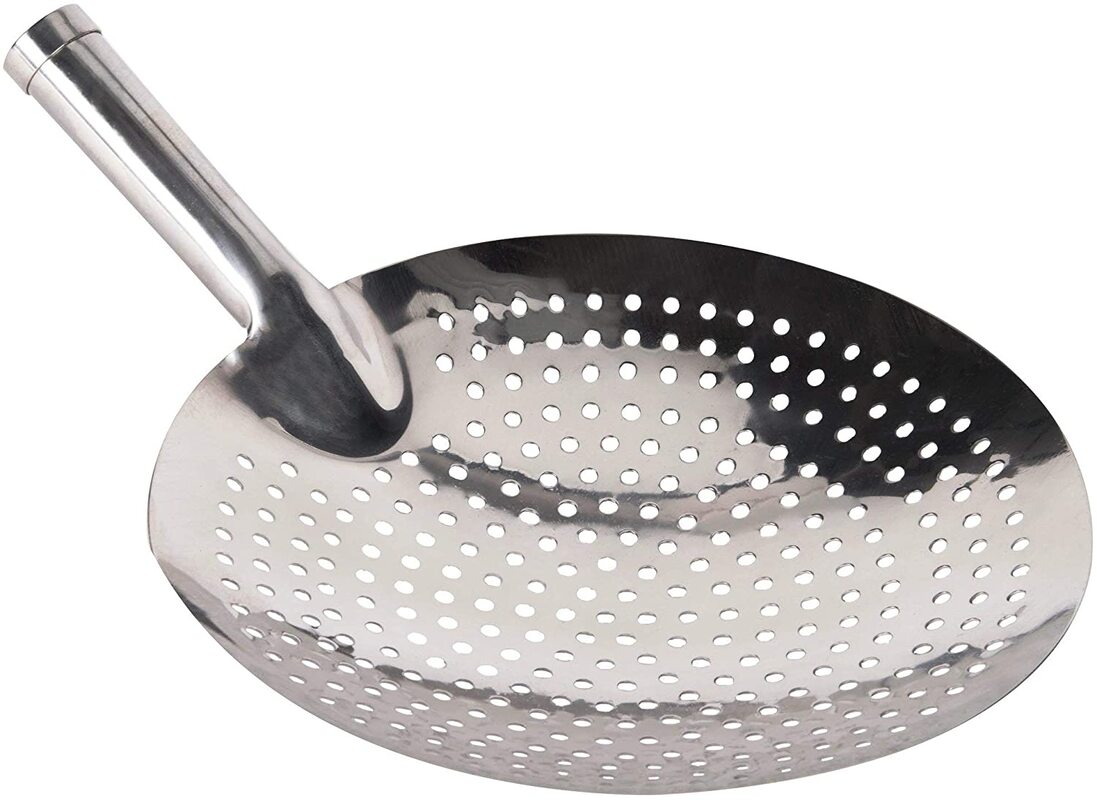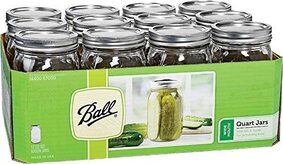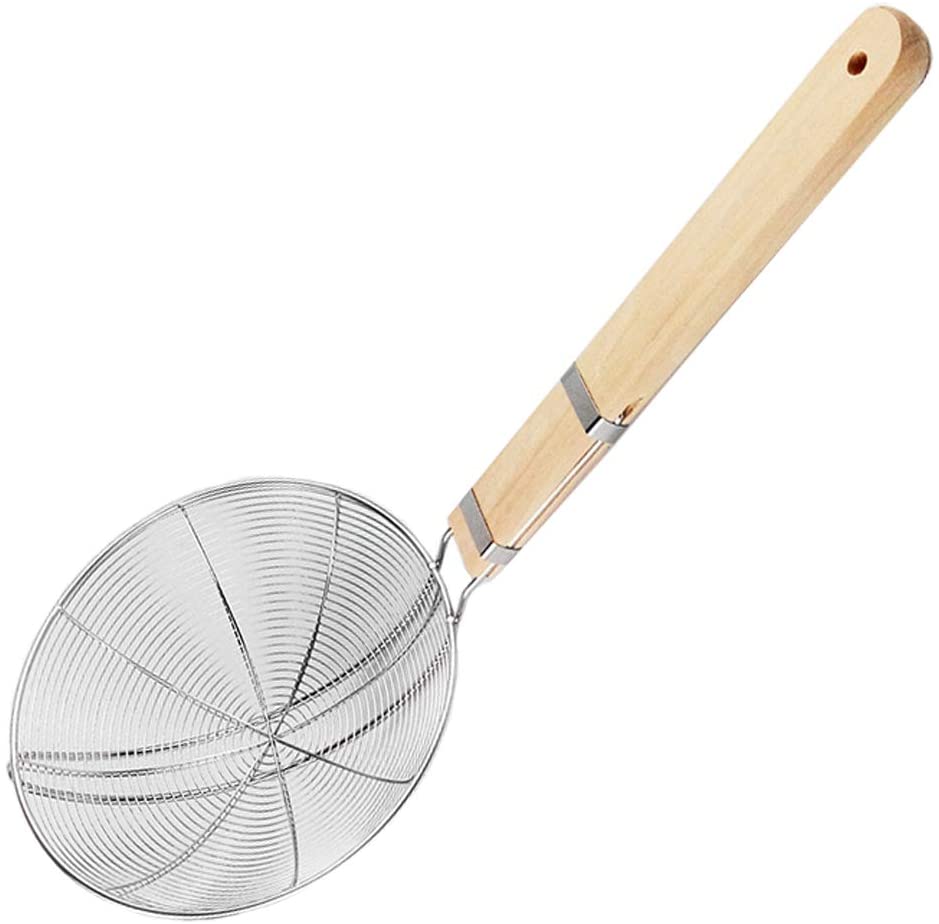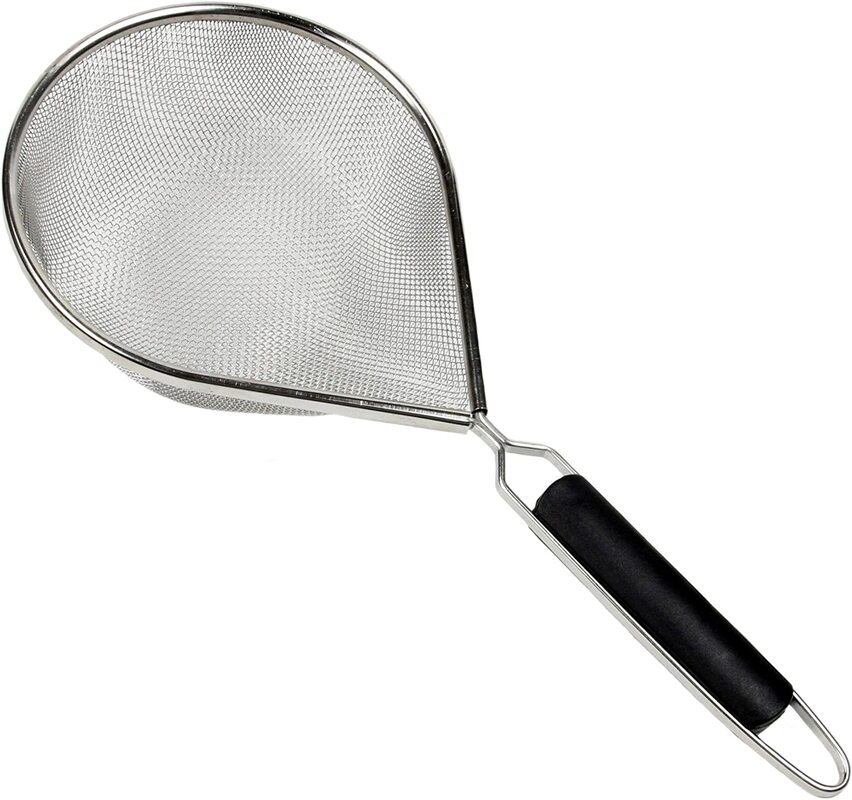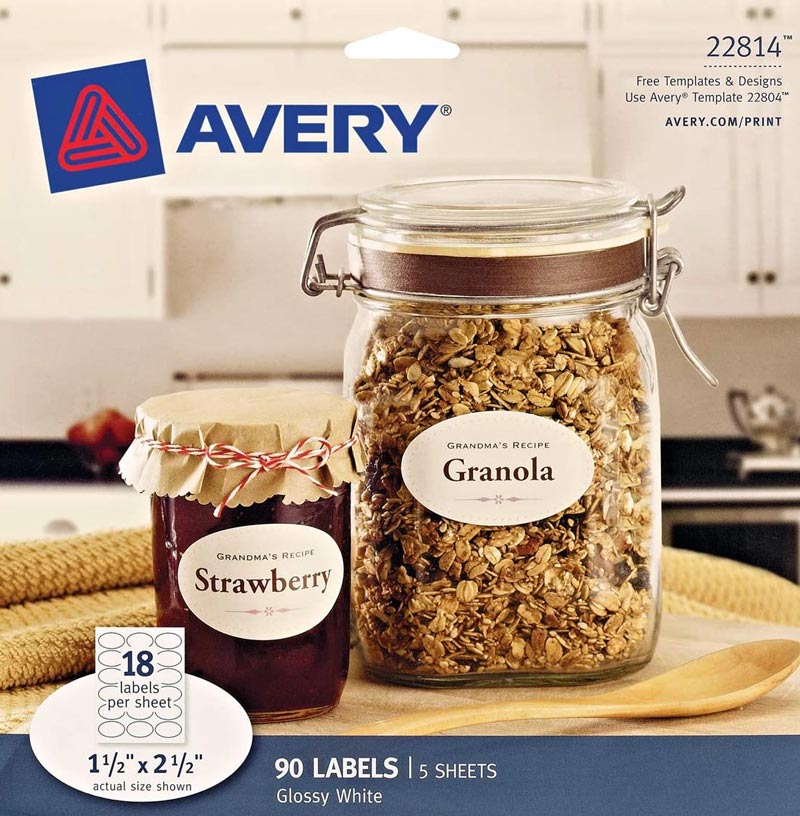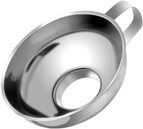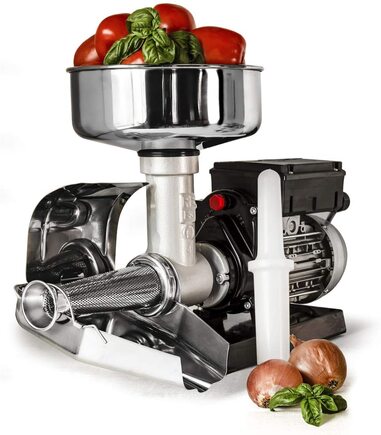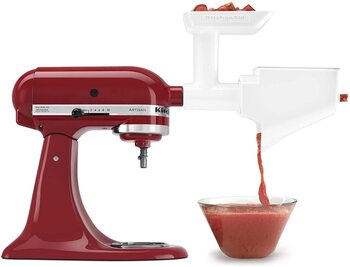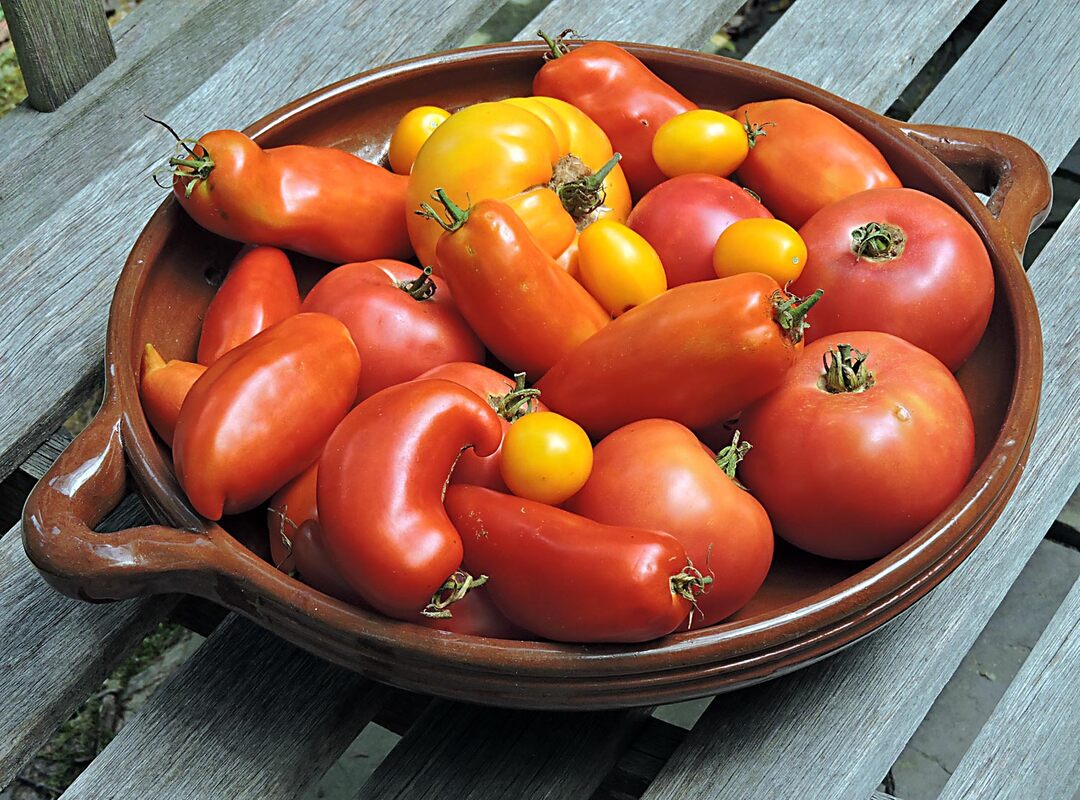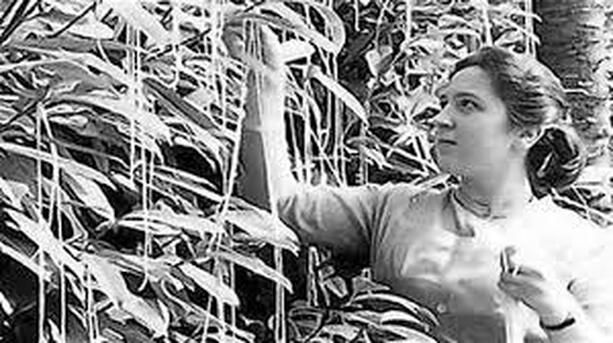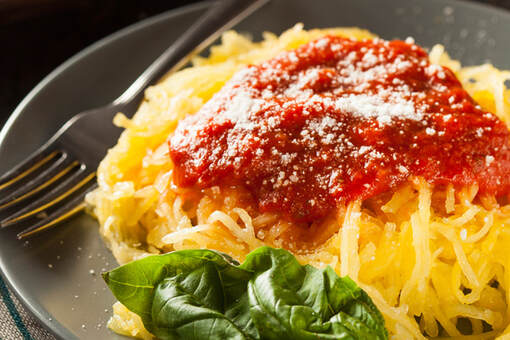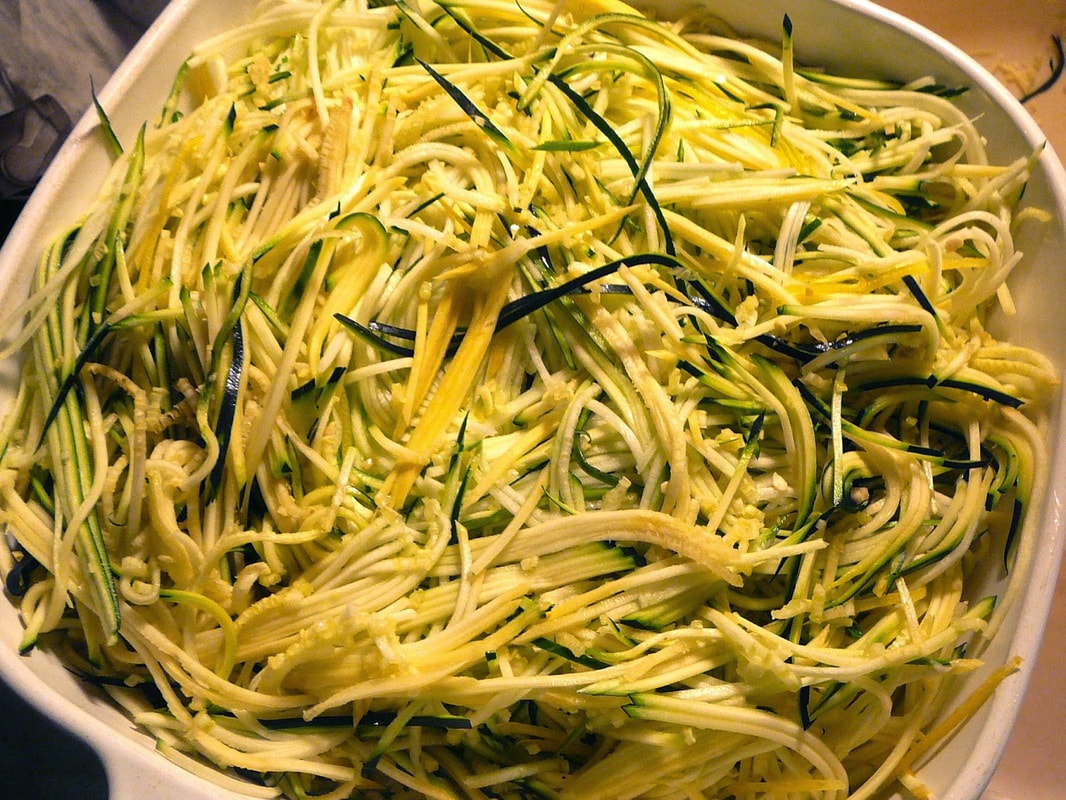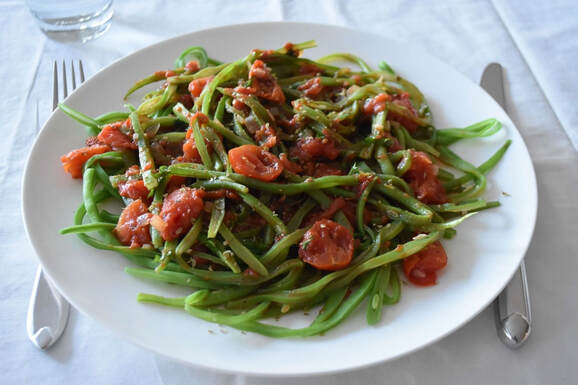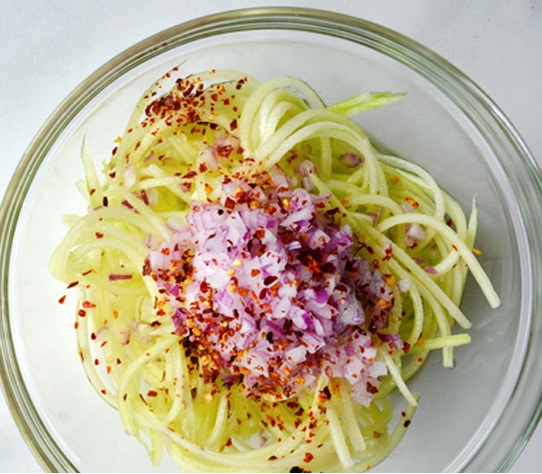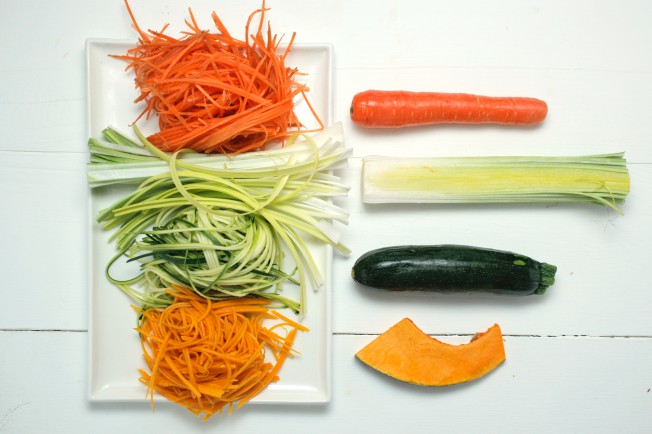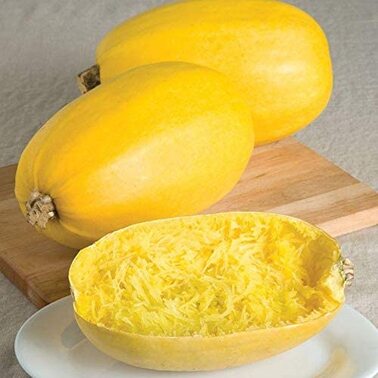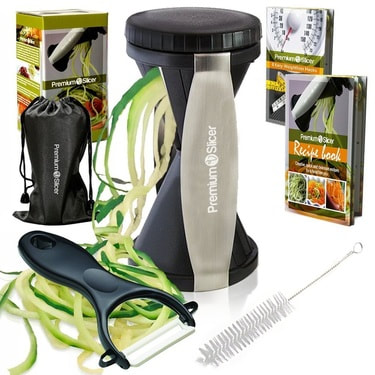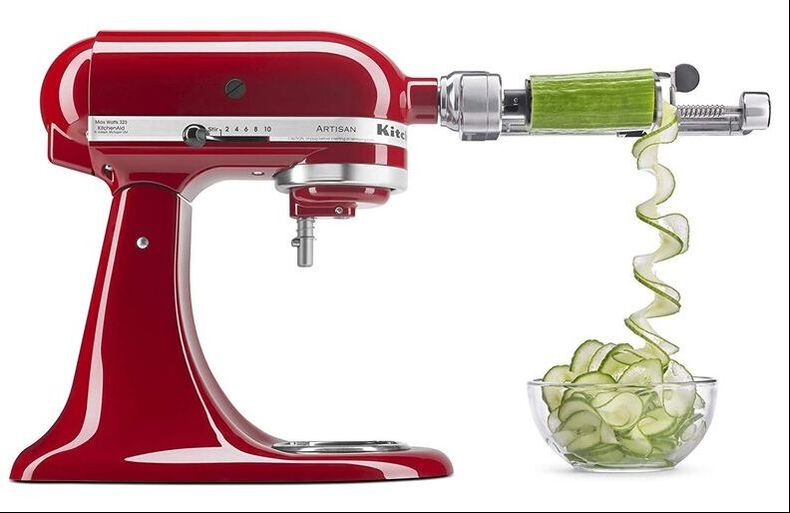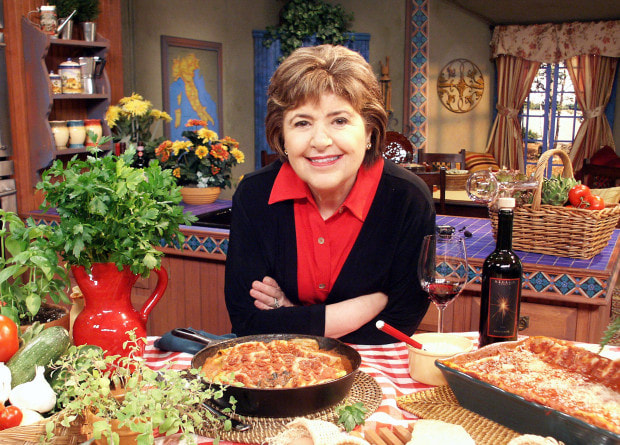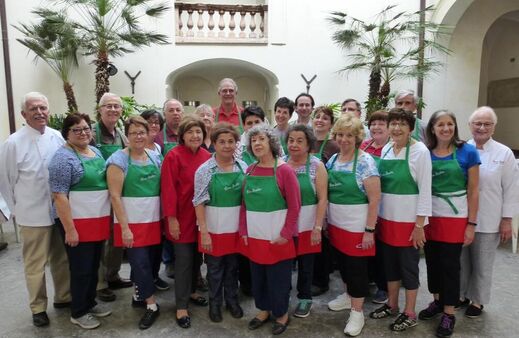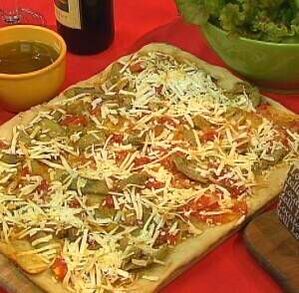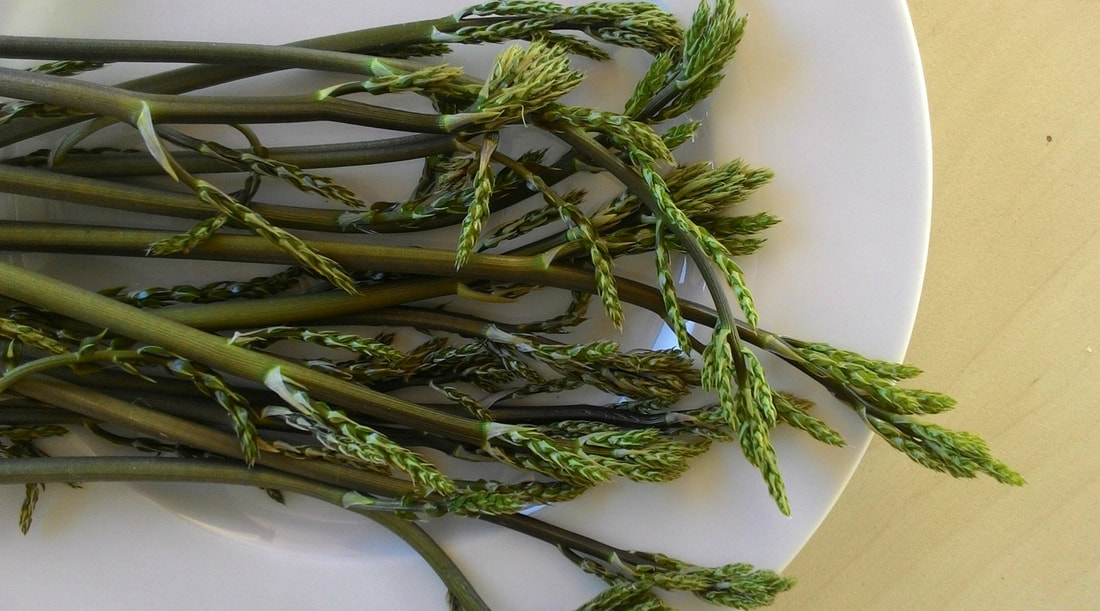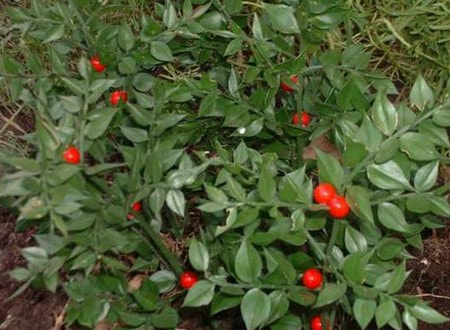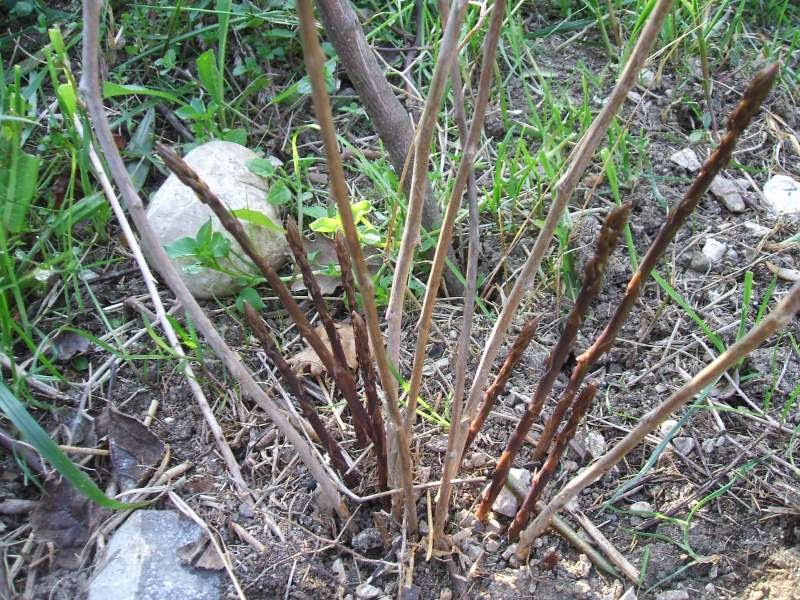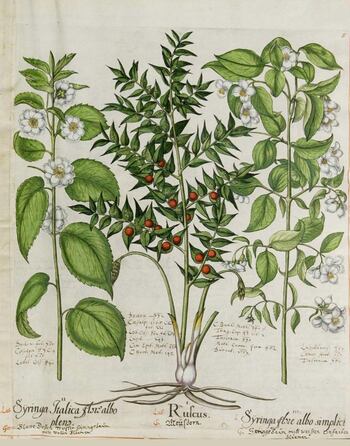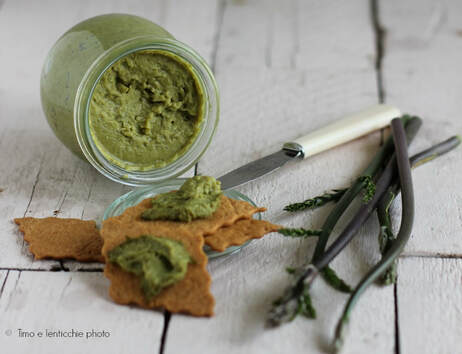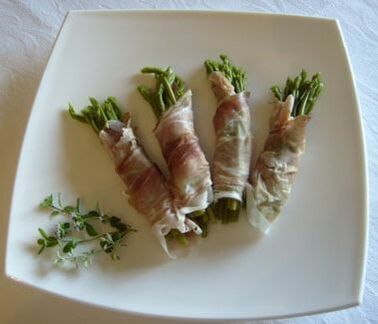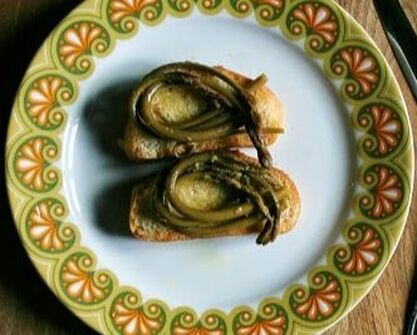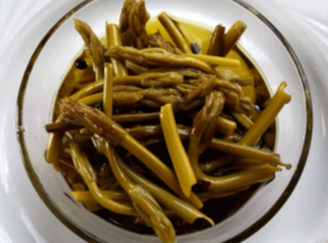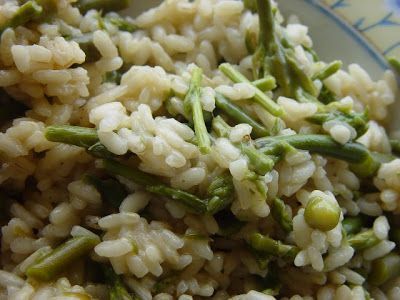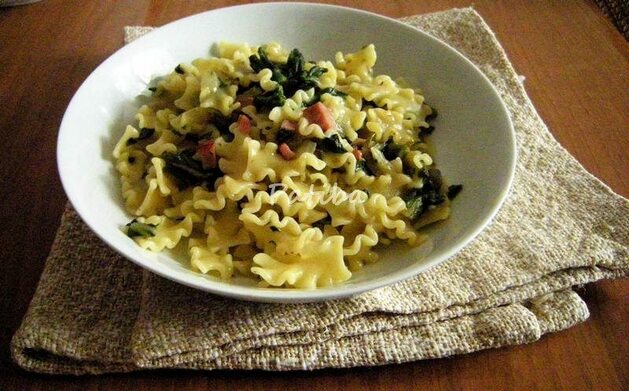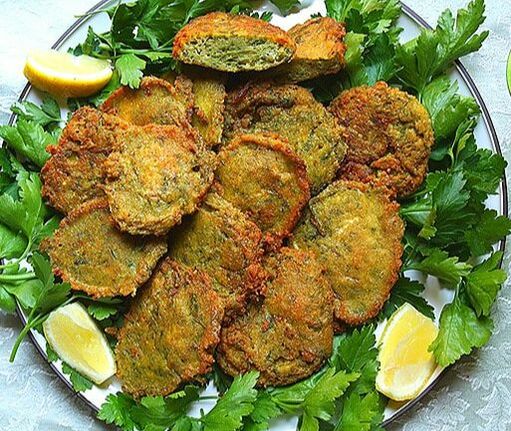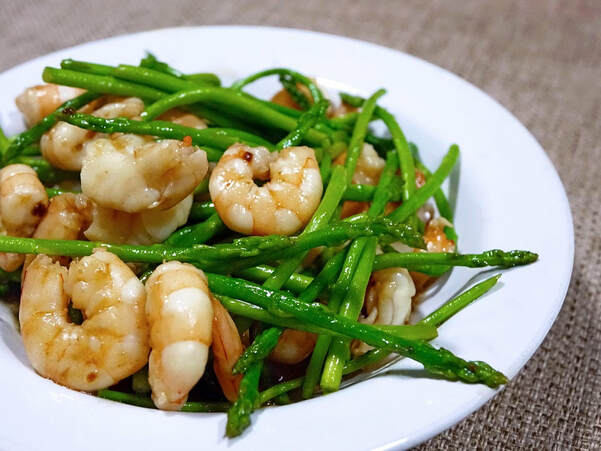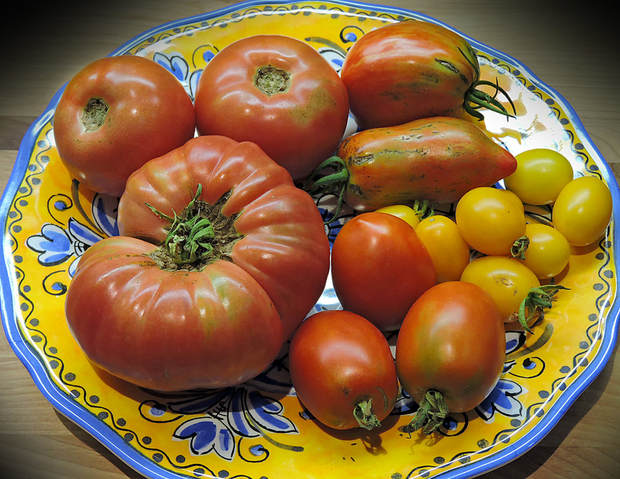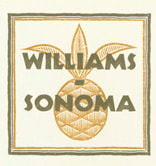|
This is the time of year when tomatoes are ripening on the vine in both the U.S. and Italy. Even if you don't grow your own tomatoes, this can be also the time to make your own Italian style passata di pomodoro--a basic tomato sauce that has all the skins and seeds removed, with all the flavor left behind. Here in the states, the closest canned product is called "tomato puree". Many families in Italy make the processing and canning of passata a yearly event--a family event--making enough jars of passata to last the entire year, often enough for extended famiglia. If you're not growing enough of your own paste style tomatoes, you can always buy a bushel or two or three from your local farm stand. Some Italian families will process up to 500 pounds of passata each year! Think of passata as a basic tomato sauce which you can use in all sorts of recipes, or even as a base to make other tomato-based sauces, such as Puttanesca, Amatriciana, Bolognese (ragu), Vodka sauce, sugo ("Sunday Gravy") or for pizza sauce. The word "passata" (passed, screened, smashed) refers to the processing with a special food mill that removes the seeds, pulp and skins, leaving only the tomato sauce behind. Other family recipes might just use a common food processor or blender, but this can't really give you a genuine passata. The cleaned, ripe tomatoes are cut up, boiled and processed to remove the skins and pulp, and finally canned in a traditional manner using a hot water bath and canning jars. Some family recipes might also add other spices or flavorings such as garlic as they boil the tomatoes, but since passata is a base to make a wide variety of sauces, you might want to add them at the time of cooking the final sauce. It is traditional, however, to add one large basil leave into each jar canned. 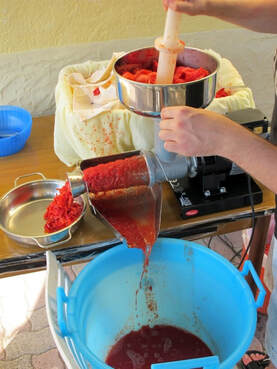 The Method of Making Passata Although you can make a passata in very small quantities, we will look at how to make a large volume for the purposes of canning and storage. We would love to promote this time honored, annual ritual here in the United States. Wouldn't it be better to have a yearly stock of your own tomato passata rather than buy supermarket sauces filled with chemical preservatives and other additives? What Type of Tomato is Best? In Italy, the best for this is San Marzano tomatoes (used in the best imported canned tomatoes), which have DOP protection and are only grown in the area of Naples surrounding Mount Vesuvius. Of course, many varieties are grown in the U.S. calling themselves "San Marzano", but they are only a similar variety. (You can't match San Marzano tomatoes because of their uniqueness of being grown in volcanic soils.) In reality, any good-tasting, full-bodied paste type tomato will work well. The tomato you select should have sweetness, depth of flavor, but also a touch of acidity--which benefits long preservation. Most paste tomatoes are thick fleshed and have a similar shape to San Marzano--that is, an elongated plum shape. You can also use larger cherry tomatoes or horn-pepper shaped varieties. Again, if it has a great taste, it will make a great passata. Leave the larger, beefsteak varieties for slicing and eating fresh. If you want to grow your own heirloom canning tomatoes from seed, we can highly recommend Striped Roma (horn shaped, sweet), Jersey Devil (horn shaped, very meaty), Debarao (plum shaped, juicy) and Martino's Roma (classic plum tomato). If you want to plant enough for lots of passata, plan on planting a minimum of 10 plants of one single variety that you earmark for canning. How Many Tomatoes? This really depends on how ambitious you are. if you use lots of tomato sauce in your recipes each year, then start with more tomatoes. You will also need more canning jars, lids and other varied supplies and tools. Having a very large pot or cauldron to boil the tomatoes helps prevent tedious, repeated boiling/canning sessions. I highly recommend doing it the way most Italians do it--using a tomato processing mill. I also love the way Italians use a very large pot to boil their jars and to do the final canning process--they use kitchen towels to layer in the glass jars to protect them from rattling around against each other. Here are some guidelines: 3 pounds of tomatoes to make 1 quart of passata. 21 pounds of tomatoes will make 7 quarts of passata. One bushel of tomatoes (about 53 lbs per bushel) will give you 15-18 quarts of passata. You will also be using sea salt and placing basil leaves into each jar.
Things You will Need
(For a large volume...)
You can use a standard hand-cranked food mill or a manual tomato milling machine to process the tomatoes, but if you're doing a large volume, you should consider investing in a powered tomato mill. The more power the unit has, the faster your processing will go. You might need to set up your milling machine on a low table, with bowl on the table to capture the pulp and a large container on the floor to capture the passata.
What About Canning Whole Tomatoes? In Italy, whole canned tomatoes are called pelati, referring to the process of peeling the skins off before canning. In the area of Naples, many families invest in crates of locally grown San Marzano tomatoes, but any pear/plum shaped past tomato will do fine. Before caning whole tomatoes, the best way to prevent spoilage is to remove the skins. Canning peeled tomatoes also affords more options for use in recipes that might call for crushed tomatoes. Skinned, whole tomatoes are easy to crush by squeeze by hand or pulsing in a food processor.
Don't forget to label your Passata and Pelati with the month and year. (Order oval Avery labels HERE on Amazon). Store them in a cool, dark place. They will last for as long as three years. Read this article carefully, watch the videos below and by all means, work safely! Make this a yearly event for your extended famiglia. I've read about families who take gather large teams together to process as much as 500 pounds of tomatoes! I would suggest starting small until you get used to the process. You can also make small volumes of passata or pelati right in your kitchen with a large stock pot, colander and tools you have lying around. And whether you use a manual tomato mill or powered, I'm sure you'll be successful and enjoy a fully packed cantina (pantry) all season long. --Jerry Finzi, GVI If you are new to canning, you can study the principles of safe canning HERE. Useful Processing Tools on AMAZON... The video below is one of the best I have found covering many aspects of making Passata and Pelati. There are some titles in English, but it might also help to click the gear icon on YouTube to turn on Closed Captions and Auto-Translate to select English... These are about 6 pounds worth of just a few of the 11 varieties of heirloom tomatoes we are growing in nostro giardano this year... The Large yellow beefsteak is Regina, the horn-shaped one is Jersey Devil, the small yellow grape shape is Olivette Juane, the large pink globe tomato is Giant Belgium (not so giant this season), and the smaller pink ball shape is Eva Purple Ball. All long lasting friends that I have grown for a couple of decades. All absolutely delizioso. Happy pesto season, tutti! --Jerry Finzi You might also be interested in...
I'm not a gullible man. Even as a boy, I wasn't one to believe everything I was told. I always asked questions... "Why? Where? When? How?" I read lots of books, including my entire encyclopedia set and my Atlas. I loved science and the arts. I used both sides of my brain. But as a 12-year-old watching the old Jack Parr show in 1963, I tended to to go by the old adage, "Seeing is believing"--especially if you see it on TV! Big mistake! What I saw was a very legitimate sounding short documentary film with a very scholarly, British voice talking about the spaghetti harvest in Switzerland, and mentioning the "tremendous scale of the Italian's... (harvest)" and the "vast spaghetti plantations in the Po valley". From that point on, until I was in my early twenties, I actually believed there was some sort of special tree or bush in Italy that produced some sort of spaghetti... fruit, pod or otherwise. It wasn't until I saw Jack Parr himself talking about the hoax on the Tonight Show in the early 1970s that I learned the embarrassing truth--a "truth" that I would argue about with my non-Italian friends growing up... "Real Italian spaghetti grows on trees!", I would insist. Parr claimed they didn't get a single call about the segment and most people bought it hook, line and sinker. OK, so maybe I was a bit gullible. But it was a very convincing documentary film, produced originally as a serious film for, of all things, a British news show... and besides, I was only 12! On April 1, 1957, on April Fool's Day (Pesce d'Aprile in Italian), the BBC television show Panorama aired the short "documentary" about the "spaghetti harvest" in Ticino, Switzerland, on the border of the Italian Alps. The film shows spaghetti trees ripe with long strands of spaghetti and a farming family harvesting by hand, putting the spaghetti into baskets and then carefully laying them out to dry in the "warm Alpine sun." Some viewers bought it entirely and called BBC to find out where they could buy some of the "real spaghetti". Many British gardeners wanted to know how to buy a spaghetti bush for their own garden. Others were very angry that a joke was portrayed as a serious subject on a real news program. Still others--like me--just tucked this into their knowledge banks, unquestioningly and carried it as a "truth" through at least part of their lives, being even more convinced every time they heard the expression "fresh pasta"... of course, that must be referring to the real stuff fresh picked from the trees! What did I know. After all, neither my Mother or Grandmother made fresh spaghetti, because spaghetti trees probably didn't grow in our climate. All I ever saw growing up was dried, boxed spaghetti--you know, the fake stuff. The following video is the original broadcast in 1957 in England... The following video gives a behind the scenes take on the Spaghetti Hoax story from a member of the Panorama production team who came up with the idea... The next video shows a further chapter of this hoax broadcast in 1967 in Britain explaining how the spaghetti crop was being ruined by a terrible pest--the spag-worm, or "troglodyte pasta". ("Troglodyte" refers to a person so stupid because he lives in a cave). In 1978, San Giorgio Pasta produced a remake of the Spaghetti Hoax for one of their TV ads. Finally, cooking know-it-all, Martha Stewart (I'm not a fan) got into the act in 2009 with her own little spoof about her Spaghetti Bush, "spago officinalis" ("official string") trees. 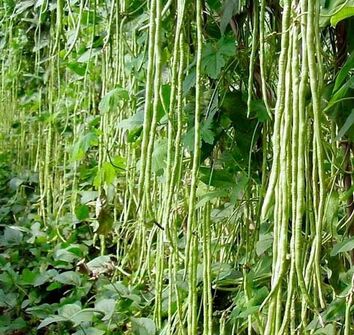 Italian snake bean seeds on Amazon Italian snake bean seeds on Amazon Well, I've had a lot more culinary education since being misled by that little April Fool's prank when I was young and impressionable: my Mom and Dad taught with every loving dish they put in front of me; Grandma taught me her authenticity; having home and studio in Manhattan for so many years where varied cuisines are around every corner also taught me; In my 30s, I finally learned how to cook from Julia Child, Craig Clairborne, Marcella Hazan, Mary Ann Esposito and Pierre Franey. I now make fresh pasta with my son, Lucas from time to time. And during our Voyage throughout Italy, I never saw a single strand of spaghetti on a bush, tree or vine. Ever. (OK, so I did look, just to be sure.) However, I have since learned that there are actually spaghetti alternatives that grow from Madre Terra. I even grew 2 foot long "snake" beans a few years ago that came pretty close. Here are a few veggie spaghetti alternatives... If you want to make your own, fresh "veggie spaghetti" at home, pick up a Premium Vegetable Spiralizer from Amazon or the attachment we use for our stand mixer, the Kitchenaid Spiralizer Attachment. It's a lot easier than picking the spaghetti from the trees, collecting in baskets and spreading them out in the sun to dry...
(Damn you, Jack Parr and your dry sense of humor!) --Jerry Finzi 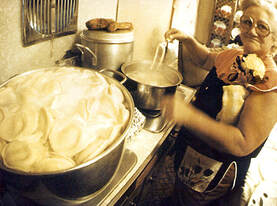 Mom with her Big Pots Mom with her Big Pots Long before my mother passed, I would visit her and Dad in their suburban New Jersey home and we would watch Mary Ann Esposito's show, Ciao Italia on their local PBS station. While I learned Mary Ann's recipe and techniques on TV, my mother passed on her own recipes and hands-on lessons in her humble New Jersey kitchen, in the same way her mother had taught her. Mom taught me to make soups first, then stews, then how to make more complex things like light, fluffy gnocchi (I still remember how quickly her arthritic fingers tossed those gnocchi from the ends of a fork). While Mom taught me our own ricette di famiglia Finzi, Mary Ann helped me perfect techniques to help me become a pretty decent, all-around Italian home cook. She also helped me understand that Italian cuisine isn't just one thing... there are many cuisines to be explored in Italy. 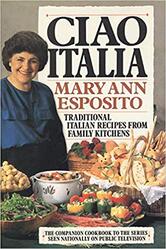 Mary Ann's first book holds a place of honor in nostra cucina Mary Ann's first book holds a place of honor in nostra cucina I wanted to have a conversation with Mary Ann in honor of my Mother, since both of these wonderful Italian women have been a strong influence in my own life in my own Cucina. My Mother would be proud to know that I shared a few words with one of our Italian heroines. Mary Ann is the author of 13 books on the art of regional Italian cooking. She has taught millions of fans how to cook authentic, regional, healthy and delicious dishes on her PBS show Ciao Italia, currently in production for its 29th season of episodes! Mary Ann has over 30,000 followers on Facebook and over 1,400 recipes on her Ciao Italia website. She has also made over 40 tours of Italy, 18 of which were organized as cooking classes attended by loyal home cooks.  Mary Ann was gracious in affording me some of her precious time, her schedule made even busier with the recent launch of her new book Ciao Italia: My Lifelong Food Adventures in Italy, as well as her preparing for the 2020 broadcast of her new season of shows on PBS (check your local PBS listings).  So, pour yourself an espresso, sit back and enjoy our conversation. As a bonus, I also discussed gardening with her husband, Dr. Guy Esposito, the official Ciao Italia gardener. --Jerry Finzi Mary Ann learning about Piadina, a flat bread from Emilia-Romagna Our Conversation...  Mary Ann in love with a vintage Capri taxi Mary Ann in love with a vintage Capri taxi Finzi: You’ve been on PBS continuously for 29 years… certainly an achievement for any TV cooking show. Can you explain your commitment to PBS and if you’ve ever been approached to do a show on a commercial cooking network? If you were offered a show, why didn’t you take the offer? Mary Ann: I wanted to have a personal connection with my audience without interruption or distraction and I wanted it to be my show in my words without someone else telling me how to do it. It would have been so much easier to go to go the commercial route but I had higher goals. Finzi: I see your point, Mary Ann. They might have re-packaged what you were bringing to the table (excuse the pun) and your menus might have been someone else’s choices, perhaps by committee. We’re happy you followed your own path. Certainly for my family, some of our favorite episodes have included location segments filmed in Italy. Does your new season include any Italian segments? And throughout the history of your voyages, where were your favorite places to explore—and cook? Mary Ann: Location shoots require a huge effort and lots of money but when our budget allows, we are in Italy. This year for our new season, we will be filming in Tuscany in the fall. All the regions are my favorite, but I am partial to Sicily and Campania.  Mary Ann's Raspberry Tart Mary Ann's Raspberry Tart Finzi: I agree with you on this. There's something so warm and welcoming in the South--a much slower pace. For me, I felt most at home when visiting Puglia where my father was born. The people's welcoming smiles reminded me of him. Some of my other favorite Ciao Italia episodes had you baking with the amazing pastry chef, Nick Malgieri. We love Nick because he was kind enough years ago to help me find the recipe for “pas-ah-chut”, as my Molfettese father called them (pasticiotti). What are your favorite pastries to make? Mary Ann: Of course I love to make cannoli, fruit tarts, lots of different biscotti. Finzi: My thing is making the Crostata di Frutta in our cucina, but my wife is the go-to gal for all sorts of cookies, cakes and pies. Happily, this year she is exploring the world of the twice-baked dolci—biscotti. I've always loved pizza and even worked at our local pizzeria for a while when I was a teen, and for nearly 20 years and I've become a fairly decent pizzaiolo at home. I’ve made Neapolitan, Chicago and Detroit deep dish, “grandma’s”, sfincione, focaccia, thin crust, etc. I think I’ve saved every one of your pizza episodes on my DVR. Which is your favorite pizza and what do you think makes it so special? Mary Ann: I would have to say Margherita is my favorite but I love making all kinds. The important thing is to use as close to original ingredients as possible like Caputo flour for the dough, real mozzarella di Bufala and fresh basil. Finzi: Happily, home gardens, farmers markets and the Farm to Table movement are growing in popularity. Living in the country, we often have to travel to Philadelphia or New York to get precious ingredients like mozzarella di Bufala, but we do grow our own veggies and lots of basil! For me, baking pastry is very specific and precise, which is perhaps why my wife does that in our house. What are your thoughts on “cooking to the recipe” versus cooking the way nonne do, by taste, look and feel? Mary Ann: I’m with you; I never cook with recipes even though I write books with precise recipes for readers based on my testing them. I think the best cooks are those who improvise. Finzi: In my case, improvisation can make it a little difficult when I want to share one of my recipes with our GVI readers. I have to convert a pinch, a dollop, a handful, a splash or to describe how a dough should look and feel. What I’ve always loved about your cooking is the historic and anthropological perspective you bring into the Italian kitchen. You teach that “Italian food” doesn’t really exist, but it’s really about the 20 different regional cuisines of Italy. What would you like to see as an effort to change the American view of “Italian food” as only being pizza, chicken “parm” or spaghetti and meatballs? Mary Ann: Watch my show! Read things about regional cooking; in my just released new book CIAO ITALIA (My LIFELONG FOOD ADVENTURES IN ITALY) you will find a treasure trove of regional recipes with stories that support their origin. Copyright, 2020 - Jerry Finzi/GrandVoyageItaly.com - All Rights Reserved
Not to be reproduced in any form without expressed, written permission. Pungitopo (also known as Butcher's Broom) might be a popular plant for use in natural healing remedies, but it is often found while hiking in the mountains of Italy for use in local, traditional Italian recipes. Pungitopo tends to grow wild as an evergreen bush (looking like a short, bushy holly) with asparagus-like sprouts in fall. It is gathered in bunches about 12" tall and used in la cucina in the same was as asparagus. Tied with string and steamed until tender, it's often eaten as a side dish or wrapped in prosciutto, The sprouts, called ruscli (rusculins in English) are the tenderest part. Pungitopo is actually a member of the lily family closely related to asparagus botanically speaking. It and was once used in Europe make small brooms to clean butchers' chopping blocks. It's scent had the ability deter rodents from taking an interest in meats hanging to cure. The plant is well known throughout Italy, Europe and to the British Isles. Other common names are jew’s myrtle, sweet broom, kneeholy, pettigree, knee holly, kneeholm. In Italy, they will also be known as asparagi selvatici (wild asparagus) or portafortuna natalizio (Christmas Luck), referring to the time of year it is usually enjoyed in the Italian kitchen. It is mostly harvested nowadays for its thick, brown rhizome, which is harvested in the fall when the plant stores most of its energy for winter. It's herbal use is to make healing teas. There use can be as simple as boiling or steaming and served with butter or olive oil, the was asparagus are served. The softer buds are used in fritatta, frittella (fritters), risotto or in pasta dishes. Their taste is bitter but the buds alone are a bit sweeter. Here are a few ideas...
--GVI Clockwise from right: Olivette Juane (yellow egg-shape, mild flavor, great for salads and focaccia) Debarao (2" red plum, good for sauces) Constaluto (this one is just under 1 pound, sweet beefsteak, great paired with smoked mozzarella and basil) Eva Purple Ball (slight purple tinge, flawless, disease/pest resistant, the sweetest, most flavorful tomato I grow!) Roma Speckled (robust, horn-pepper shaped sauce tomato, very meaty and sweet) My heirloom tomato harvest started late this year for various reasons: because of heavy spring rains, we planted out our seedlings about 2 weeks late; a heat wave prevented blossoms from setting fruit; on and off heavy rains caused a growth spurt. We planted 12 different varieties... these five were the first to ripen.
--Jerry Finzi |
Archives
May 2024
Categories
All
|

